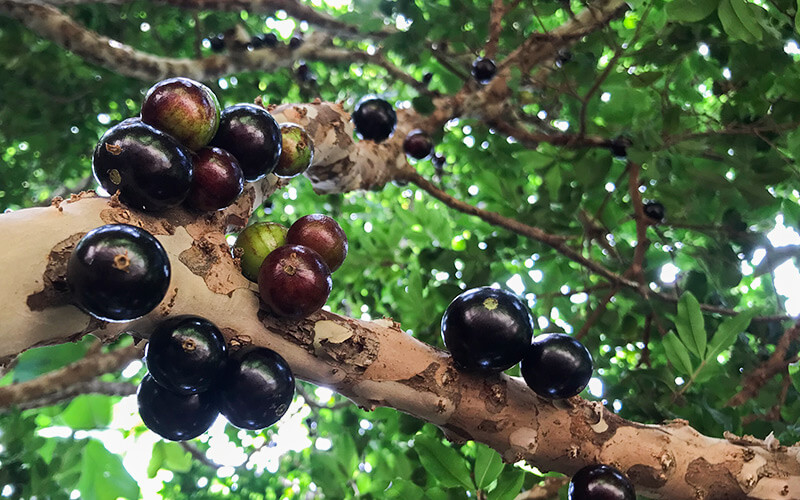
Once while walking through the grounds of Cal State Fullerton’s Arboretum and Botanical Garden, Greg Pongetti, living collections curator, came upon a man who was collecting leaves and fruit from the wampee tree.
“I stopped to tell him that visitors aren’t allowed to harvest fruit, leaves, flowers or plants from the arboretum,” Pongetti said. “Then I asked him what he was going to do with the fruit and leaves.”
The man explained that he was trying to prepare duck as it was made in Vietnam, using the leaves and fruit of the wampee tree.
“I was intrigued by that, so he happily pulled out his phone to show me some YouTube videos of the cooking process. He was trying to recreate the recipe,” said Pongetti.
Previously, when Pongetti visited Vietnam, he saw many people carrying bundles of the fruit as this particular tree is easily found in that country.
Many of the arboretum’s fruit trees attract attention from visitors who are surprised and delighted to see some of these trees for the first time in Southern California, explained Pongetti.
In fact, the collection’s jamun tree provides fruit that are used in some cultures to help regulate blood sugar.
“I’m told that although it doesn’t replace medications such as insulin and it isn’t a cure, but that the seeds of this plant, when ground up and used as a tea, sprinkled on yogurt, or packed into capsules, can help smooth the ups and downs of blood sugar levels. The fruit of this tree can often be eaten as well.”
In late August and September, before the fruit is ripened, Pongetti said he receives calls and emails asking to purchase several pounds of the fruit to be used for this purpose.
“People from different cultures are always happy to see the trees and fruits from the countries of their origin,” Pongetti said.
Other popular rare fruit trees include the sapote tree from Central and South America and the jujube tree from China.
Some of these rare fruits can be found for sale, when they are in season at the Arboretum and Botanical Garden’s front entrance during normal business hours.
“I love to hear our visitors describe how these fruits and seeds, and sometimes even leaves, are used for cooking or medicinal purposes,” said Pongetti. “It’s also great to see how excited people are when they recognize trees and plants from their childhood or past.”